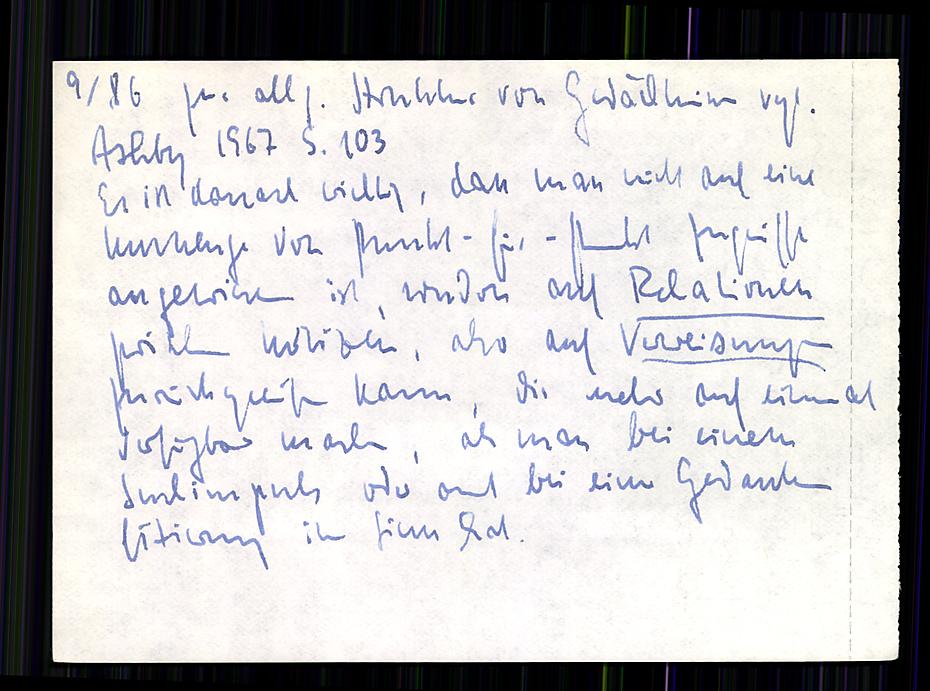Your zettelkasten, having a perfect memory of your "past self" acts as a ratchet so that when you have a new conversation on a particular topic, your "present self" can quickly remember where you left off and not only advance the arguments but leave an associative trail for your "future self" to continue on again later.
Many thoughts and associations occur when you're having conversations with any text, whether it's with something you're reading by another author or your own notes in your zettelkasten or commonplace book. For more conversations on this topic, perhaps thumb through: https://hypothes.is/users/chrisaldrich?q=tag%3A%27conversations+with+the+text%27
If you view conversations broadly as means of finding and collecting information from external sources and naturally associating them together, perhaps you'll appreciate this quote:
No piece of information is superior to any other. Power lies in having them all on file and then finding the connections. There are always connections; you have only to want to find them.—Umberto Eco in Foucault's Pendulum (Secker & Warburg)
(Reply to u/u/Plastic-Lettuce-7150 at https://www.reddit.com/r/Zettelkasten/comments/1ae2qf4/communicating_with_a_zettelkasten/)
